The 80 Greatest Shots In Disney Animation History [Part One]
(Welcome to The Greatest Shots in Disney Animation History, a limited series where Disney expert Josh Spiegel selects and ranks the defining moments in one of the greatest, most important, and most influential collections of films ever made.)Walt Disney Animation Studios has, over nearly 85 years, created 58 animated feature-length stories that have encompassed a vast swath of ideas, characters, and worlds. What began as a way to visualize some of the most well-known fairy-tale myths in Western literature is now a proving ground for ambitious stories, and equally ambitious ways to visualize those stories. 2020 marks an important anniversary for two of the studio's oldest and most beloved films: Pinocchio and Fantasia both turn 80 this year, with Pinocchio's American premiere on February 23 and Fantasia's on November 7. (Let's not forget Cinderella, which turned 70 on February 15.)I have, in the last few years at /Film, been extremely fortunate to honor the legacy of Disney's animated films in a few ways. I've ranked all of the songs in Disney and Pixar films. (How many songs, you ask? Oh, just 368.) I've ranked the films of both Disney and Pixar. For Pinocchio's 80th anniversary, sure, I could have talked about the movie itself earlier this year for the anniversary — it's my favorite animated film ever. But I figured I would zig instead of zag. Or, if you like, I felt like being ambitious/insane with a new list.In honor of the Pinocchio and Fantasia anniversaries, here's a ranking of the 80 best shots in Disney's animated films. This list is limited, to note, just to the 58 Walt Disney Animation Studios titles (not Pixar), and not every title is represented. But it is ranked, and I've got proof in the form of GIFs and YouTube videos. So, let's dive in.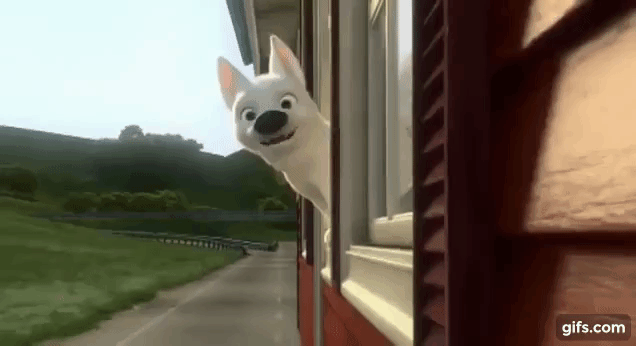
80. Bolt: Bolt embracing the joys of being a dog
The story of Bolt is awfully similar to the story of Toy Story, as an arrogant lead character has to realize that they're not the star they thought they were. One thought he was a spaceman; the other thinks he's a super-powered dog. Buzz Lightyear's realization is a bit sadder and more existential; when Bolt realizes that he's just a regular dog, he gets to indulge in the pleasures of being a regular dog. One of those pleasures is sticking his head out the window of a moving vehicle and letting his tongue fly. The image of Bolt doing this is most memorable because it captures our hero enjoying his true nature. No dialogue is needed here to let us know how Bolt feels. The animation does all the work.
79. Home on the Range: Cows under the yodeling spell
Even some of the weaker Disney animated films have memorable moments. Take, for example, Home on the Range. (Please. Take this movie.) The 2004 film is now held up as one of the reasons why Disney hand-drawn animation was wound down; somehow, the story of cows teaming up to stop a cattle rustler, featuring a voice cast including Roseanne, Dame Judi Dench, and Cuba Gooding, Jr. just wasn't enough to get audiences interested. But this film, as strange as it sounds, does have a couple of striking shots, like the one seen at 2:06 in the video above. Yes, that's really what it looks like: cows in sway to the aforementioned rustler, who gets cows under his spell by yodeling Pied Piper-style. (I should mention the rustler is voiced by Randy Quaid, because of course he is.) This image is one of only a few in the film that are worth discussing, but it's just so odd, hallucinatory, and unlike anything else you could find in Disney animated films that it'd be wrong to omit it from the list.
78. Dinosaur: Being gobbled up under the sea
20 years ago, Dinosaur was an experiment for Walt Disney Pictures. It wasn't even technically from Walt Disney Animation Studios, but from an outside animation unit that created a computer-animated story with live-action backgrounds. The opening five minutes of the film are its most remarkable, both because the plot has yet to kick in (once the characters start talking, the magic wears off very quickly) and because it tells a thrilling tale of how a dinosaur egg nearly becomes swallowed whole by nature and predators before becoming a very important character. This shot (seen at 0:53 in the video above) is a great example of the opening sequence's thrilling effectiveness, while also proving how far technology has come in the last two decades. What was once cutting-edge looks now commonplace, but still perversely fascinating.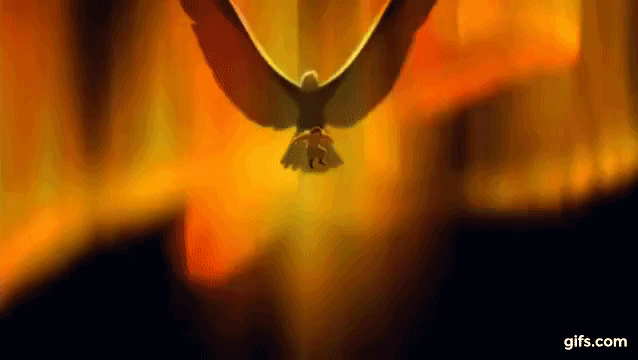
77. Brother Bear: Turning from man to bear
Before there was Brave, there was Brother Bear. Both of these are films set in very culturally specific areas of the world in the past, in which our hero has to deal with a human transforming into a bear. The difference in Brother Bear is that the hero himself is turned into a bear due to some mysterious magic. Kenai, voiced by Joaquin Phoenix (and if you've never seen this film, I promise you that, yes, Academy Award winner Joaquin Phoenix voices a guy who turns into a bear), goes through that stunning transformation after murdering a bear, and now he must serve penance of a sort for his crime. The moment when Kenai loses his humanity and becomes a bear is animated with vibrant color and rich detail. There are a number of issues with this film, but its naturalistic animation is its strongest suit, as exemplified in this lovely and striking shot.
76. Treasure Planet: Jim Hawkins spinning upside down through space
In some ways, Treasure Planet is the weak spot in the filmography of directors John Musker and Ron Clements. (I'm sure I've angered the contingent out there who adores this movie. They're real, but I have to live my truth.) The space-bound adaptation of Robert Louis Stevenson's Treasure Island feels almost instantly dated and quaint, in spite of being heavily inspired by steampunk design. Yet the film isn't without its glorious, striking moments. Much as another shot on this list, courtesy of a Musker/Clements joint, employs an unexpected and bracing use of shaky cam, the same is true of this moment, as we watch the teenaged Jim Hawkins on a flying skateboard of sorts, spinning through space at headlong speed. It's a thrilling little shot in a film that needs a lot more of them.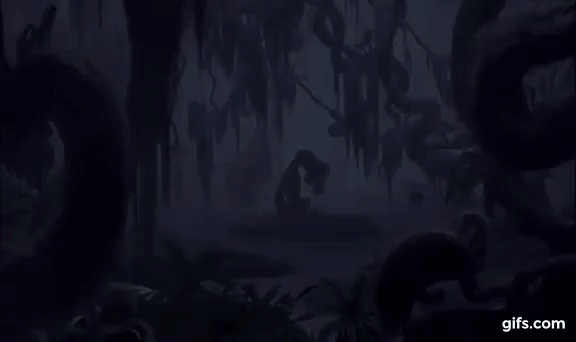
75. The Emperor’s New Groove: One sad llama
The Emperor's New Groove is not often credited for its animation. (Before I continue, I am fully aware that this movie has a passionate fanbase. I know!) The film came together extremely quickly, after a more dramatic take on the kingdom of the Aztecs was nixed. The result is a much funnier, faster, weirder film that's vastly less interested in creating gorgeous tableaux, and more about making you laugh at Looney Tunes-style antics. But the opening shot sets the stage for goofiness: it's the image of our ostensible hero Emperor Kuzco, in his transformed state as a llama, crying in the rain. Kuzco, voiced by David Spade, isn't quite a figure of pity; in its sly way, this shot establishes the self-aware tone the entire film will evince even as it seems to be asking for your pity.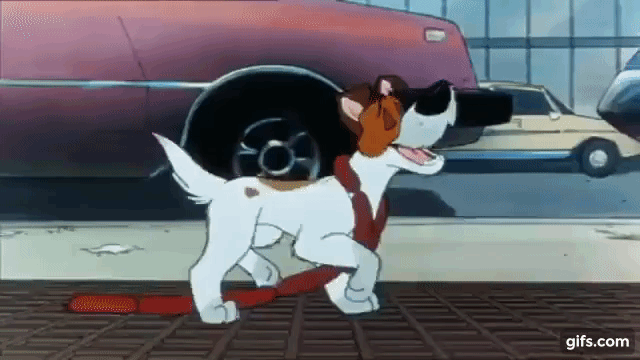
74. Oliver & Company: Dodger on the sidewalk grate
The standout sequence in Oliver & Company is easy enough to choose, largely because there are very few standout sequences in the 1988 riff on Oliver Twist. As in the Dickens story, the orphaned Oliver, a cat this time around in modern-day New York City, encounters the wily Dodger, this time a dog voiced by musician Billy Joel. Because it's Disney, and because it's Billy Joel, though, Dodger soon delivers his statement of purpose in musical form. "Why Should I Worry?" is a fun song, perfectly fitting with Billy Joel's style of performance, but it's coupled with shots like this, as Dodger calmly and confidently struts across a drafty grate on the NYC sidewalks, a cock of the walk even in the roughest circumstance. The character animation on Dodger here does as much to contribute to his characterization as Joel's performance.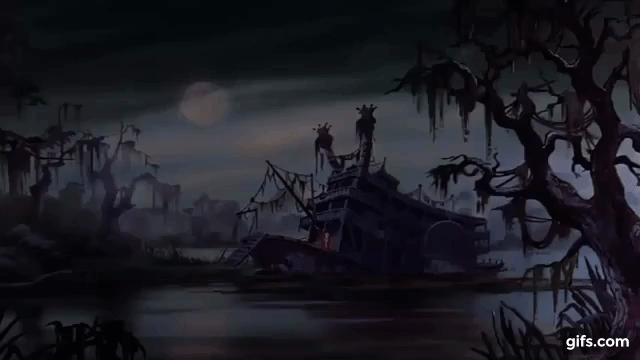
73. The Rescuers: Madame Medusa’s bleak riverboat
The Rescuers is a grim affair. The 1977 adventure is ostensibly about how two intrepid mice are able to work with other friendly animals to rescue a kidnapped orphan named Penny from the clutches of an evil woman named Madame Medusa. And while it is that story, it's hard not to just feel like The Rescuers wallows in the grim reality of a little girl with no parents, no friends, and no help...except for literally two mice. Yet as bleak as the film can be, the background animation is fittingly spooky and rich with detail, as in this shot of the riverboat where Madame Medusa is holed up, keeping Penny in line with her oafish assistant and her two alligators, Brutus and Nero. This shot is a great encapsulation of a fairly dark film, in just a few seconds, and an example of the darker artistry Disney's younger animators tried to swerve towards in the 1970s.
72. Lilo & Stitch: Stitch watching the true meaning of ohana
If you know the 2002 animated film Lilo & Stitch, then you know that "ohana" means "family." (You might know that without knowing the film, but let's move on.) That message is key to the emotional uplift of Chris Sanders' debut directorial feature, as the feisty young girl Lilo further embraces her family thanks to the arrival of her new pet, who is also an escaped alien prisoner, named Stitch. Stitch, though, has a lot more to learn about family, and the first inklings of his embrace of ohana comes in this shot (seen at 0:06 in the video above). He just watches Lilo getting playfully buried in the sand of a Hawaiian beach by her sister and her sister's boyfriend. It's not a traditional family moment, but the kind of emotional togetherness that starts to crack at the tough veneer of the alien's exterior. The watercolor design of the film lends itself to the sweetness of moments like this, too.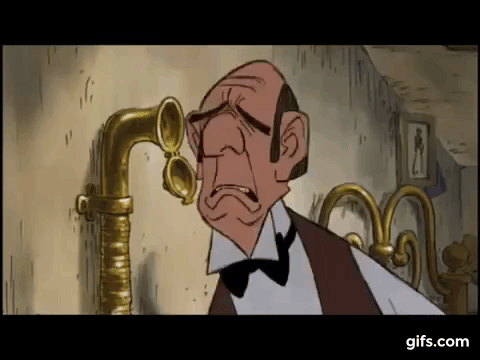
71. The Aristocats: Edgar finds out who gets a financial windfall
Character animation can be one of the most challenging aspects of the medium, whether it's hand-drawn, computer-animated, or stop-motion (or something in between). Animating the body and facial features of a character can either lean towards photorealism or cartoony impossibility, potentially causing viewers to be alienated one way or the other. The Aristocats, the 1970 film from Walt Disney Animation Studios, leans much harder into the Xerographic style in its design, but even within that messier style (which many animators of the era enjoyed, but I personally prefer cleaner lines and designs), there are some memorable moments. One such moment comes when the put-upon butler of an elderly French dame learns that when she dies, she's leaving her fortune to her cats. Or, as the butler Edgar wheezes, "Cats?!?" The accompanying animation tells you everything you need to know about Edgar as a person, and everything about the film's visual choices. It's distinctive and unforgettable.
***
Part two of this list will run tomorrow, with additional entries arriving in the days after that. See you then!
